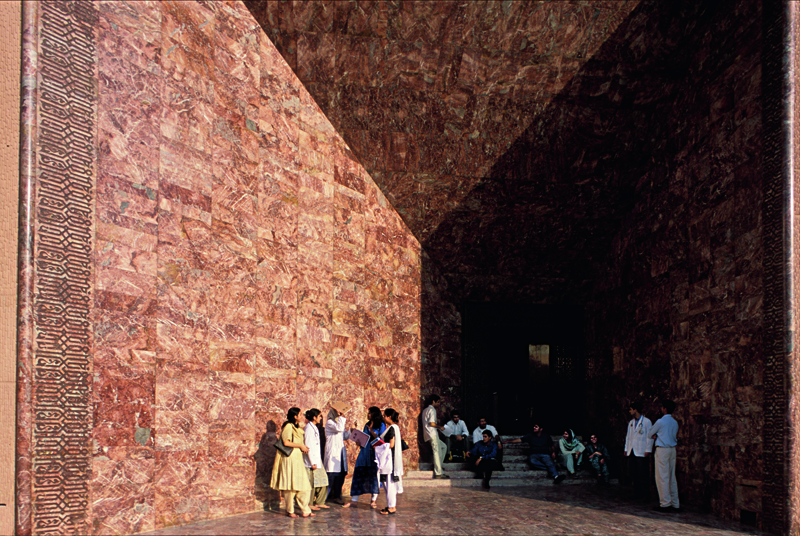A symposium co-hosted by the Architecture Space and Society Centre and the Centre for Medical Humanities, Birkbeck, University of London
Tuesday 13 June, 6-8pm, Keynes Library, School of Arts, Birkbeck, 43 Gordon Square, London WC1H 0PD
This event is free, but booking is required. Book here!

Scholarship on the modern Middle East has tended to treat histories of architecture and health separately. The motivation behind this panel is to bring these two sets of scholarship to bear on one another and to question how ideas of health and architecture were articulated within the shifting political and cultural landscapes of the mid-nineteenth to mid-twentieth century Middle East. To this end, the speakers examine three building types – hospitals, medical schools, and bathhouses – across a range of sites from Iran to Lebanon.
The Middle East in the Rise of the Modern Hospital
Sara Honarmand Ebrahimi – Goethe Universität Frankfurt am Main
There are two popular assumptions in the historiography of the rise of the modern hospital. One is the assumption that the period between 1920 and 1980 witnessed the rise of the modern hospital, marked by a change from tradition to modernity, from misery to health, hygiene, and wellbeing; and the next is that the modern hospital was a product of international liberal discourse. These assumptions then argue for the “transformation” to and “appropriation” or “refiguration” of the modern hospital in the rest of the world. Looking at the Middle East, this talk aims to provoke discussions against these assumptions and the homogeneity of the concept of the modern hospital. We might look at colonial encounters as the spaces where the modern hospital took shape, search and reveal “south-south” patterns of negotiation and exchange, or discuss how the Middle East acted as a “laboratory” for the formulation of the modern hospital, but can we write a history where the fundamental background of the modern hospital was articulated within and in relation to traditions in the Middle East?
Medicine, Education, and the Collective Colonisation of the City in Ottoman Lebanon
Yasmina El Chami – University of Sheffield
Recent efforts in missionary and imperial historiography have focused on developing the notion of the ‘non-West’ as a space of ‘mutual encounters’—challenging the supposed binaries of earlier colonial and postcolonial scholarship, aiming to highlight the contribution of local actors and their agencies. Exploring the case of missionary education in Ottoman Lebanon—which was never formally colonised—this talk proposes that analysing inter-imperial and informal relationships of knowledge and power through the lens of architecture can complicate the idea that the ‘encounter’ was ‘mutual’. Charting the rise of medicine as an educational pathway and later a profession, the entanglement of imperial allegiances and socio-cultural networks, and the endurance of such hierarchies through the permanence of space, I will argue that the rise of medicine and education in modern Lebanon was an imperial legacy of missionary competition through which the city and its citizens were—and continue to be—collectively colonised.
Public Bathhouses as Battlegrounds for Ideological Controversies in Constitutional Iran: The Story of Mirza Abu Taleb Bathhouse
Kamyar Salavati – University of Exeter
Despite the vast literature on the history of traditional public bathhouses (hammams) in Iran and the Islamicate world, modern bathhouses, known as ‘numbered bathhouses’, have been largely overlooked in the histories of architecture in Iran. During the late 19th and early 20th centuries, these bathhouses became a battleground for different socio-cultural and political ideologies. On one hand, the conservatives defended the traditional hammams, and on the other, the Constitutionalists championed the establishment of more ‘hygienic’ hammams. What was similar on both sides of the controversy were their religious justifications as to why they should accept or reject new types of public bathhouses. Focusing on one public bathhouse of this period—the hammam of Mirza Abu Taleb—and what happened to it, I will explore the controversies and resistance among the public and the more conservative groups against the new hammams.
Speaker Biographies:
Sara Honarmand Ebrahimi is a Humboldt Research Fellow at Goethe University Frankfurt am Main, where she is developing her project ‘Unofficial Internationalists, Hospital Design, and the Healthcare of the Future’. Previously, she was a Postdoctoral Research Fellow at University College Dublin (2021-22), and a Paul Mellon Centre for Studies in British Art Postdoctoral Fellow at the University of Edinburgh (2019-20). She studied for her PhD in University College Dublin, where she was an Irish Research Council (IRC) doctoral scholar. Her research interests address the multifaceted origins of ideas and practices in the history of international health and architecture and consider the history of emotions as a way of doing architectural history.
Yasmina El Chami is an architect and Lecturer in Architectural Humanities at the University of Sheffield. She holds a PhD in architecture from the University of Cambridge, an MPhil in architecture and urban design from the Architectural Association, and a BArch in architecture from the American University of Beirut. Her work examines the intersections of colonial and imperial histories with the production of the built environment, focusing on informal imperial actors in the nineteenth- and twentieth-century Middle East. Her research has been recognised by several grants and awards, including the Institute of Historical Research Scouloudi Fellowship (2020–21), the Society of Architectural Historians of Great Britain’s Hawksmoor Medal (2020), and the Presbyterian Historical Society’s Annual Research Fellowship (2020).
Kamyar Salavati is an architectural historian, musicologist, journalist, and a PhD student in Arab and Islamic studies at the University of Exeter. He earned his master’s in architectural studies from the University of Tehran and his undergraduate degree in architecture from Razi University, both in Iran. Currently, he is researching how epidemics have contributed to the emergence and shaping of modern architecture in Iran during the period of 1850s to 1950s. His research interests include the correlation between modern architectural history and health, sonic representations of the built environment, and the history of music criticism in Iran.
Book your free ticket here!



Leave a Reply